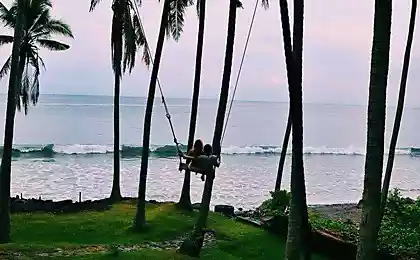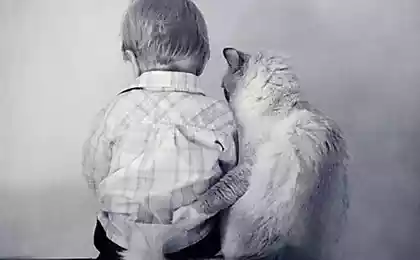195
Unconditional acceptance
As a Stanford student, I was part of a small group of doctors and psychologists involved. Carl Rogers, pioneer of humanistic psychotherapy. I was young and proud of my knowledge of medicine, being consulted and listened to by my colleagues.
Rogers’ approach to therapy, which is called unconditional acceptance, seemed to me contemptible at the time; it looked like lowering standards. There were rumors that the results of his therapy sessions were almost miraculous.
Rogers had a deep intuition. When telling us about his work with clients, he paused to articulate exactly what he wanted before us.and And it was absolutely natural and organic. This style of communication was very different from the authoritarian style I was used to as a medical student and working in a hospital.
Is it possible that a person who seems so insecure could actually be skilled at something? I had very serious doubts about that. As far as I could tell at the time, The essence of unconditional acceptance was that Rogers sat down and simply accepted whatever the client said, without judgment, without interpretation. I didn’t know how this could have the slightest benefit.
At the end of the class, Rogers offered to demonstrate how his approach worked. One of the doctors volunteered to act as a client. The chairs were placed so that they both sat opposite each other. Before starting the session, Rogers stopped and looked around us, the audience of the doctors and myself.
In that short, silent moment, I was impatient. Rogers then said, Before each session begins, I pause for a brief moment to remember that I too am a human being. There is nothing that can happen to a person that I, being also a person, cannot share with him; there is no fear that I cannot understand; there is no suffering to which I can remain insensitive - it is inherent in my human nature. No matter how deep the trauma of this person is, I should not be ashamed of it. I'm also defenseless in the face of trauma. And that's why I've had enough. No matter what this person has experienced, he does not have to be alone with it. This is where healing begins.” [Rachel Naomi Remen separates the concepts of “heal” and “heal”]
The session that followed was breathtakingly profound. Throughout the session, Rogers didn't say a word. Rogers broadcast his full acceptance of the client as he was, only through the quality of his attention. The client (the doctor) started talking and very quickly the session grew into a presentation of the method as it is.
In the protective atmosphere of Rogers’ full acceptance, the doctor began one by one to shed his masks. At first hesitant, and then easier and easier. When the Mask was discarded, Rogers welcomed and greeted the one who was hiding under it—certainly without interpretation—until the last mask finally fell asleep and this doctor appeared before us as he was, in all the beauty of his true and unprotected nature.
I doubt he has ever faced himself in the way he has ever seen himself before. By that time, many of us had slipped all our masks and some of our eyes were full of tears. At the time, I was jealous of this doctor-client; how sad I was that I didn’t volunteer for this session, that I missed a chance – a chance so, so total to be seen and accepted by others. Except for a few episodes of communication with my grandfather, in my experience it was the first encounter with such acceptance in a lifetime.
I’ve always worked hard to be good enough – that was my gold standard for deciding what books to read, what clothes to wear, how to spend my free time, where to live, what to say. Even “good enough” wasn’t enough for me. I spent my whole life trying to be perfect. But if Rogers's words were true, perfection is nothing. All it really took was to be human. I'm a human being. All my life I was afraid that someone would find out.
In fact, what Rogers emphasized was wisdom, the most basic level of healing. No matter how brilliant we are, the greatest gift we can give to the sufferer is our integrity.
Listening is perhaps the oldest and most powerful healing tool. It is often the quality of our attention, not our wise words, that drive the most profound changes in the people around us. By listening, together with our undivided attention, we open up the possibility for the other to become whole. What was rejected, devalued, was not accepted by the person and his environment. What was hidden.
In our culture, the heart and soul often become homeless. Hearing creates sacred silence. When we listen generously to others, they too can hear the truth that is in them. Sometimes people hear this for the first time in their lives. During silent listening, we can find/recognize ourselves in another. Gradually, we can learn to hear anyone and even a little more – we can learn to hear the invisible, addressed to ourselves and to us.
Credit Rachel Naomi Remen
P.S. And remember, just changing our consumption – together we change the world!
Join us on Facebook, VKontakte, Odnoklassniki
Source: sobiratelzvezd.ru/bezuslovnoe-prinyatie/
Rogers’ approach to therapy, which is called unconditional acceptance, seemed to me contemptible at the time; it looked like lowering standards. There were rumors that the results of his therapy sessions were almost miraculous.
Rogers had a deep intuition. When telling us about his work with clients, he paused to articulate exactly what he wanted before us.and And it was absolutely natural and organic. This style of communication was very different from the authoritarian style I was used to as a medical student and working in a hospital.
Is it possible that a person who seems so insecure could actually be skilled at something? I had very serious doubts about that. As far as I could tell at the time, The essence of unconditional acceptance was that Rogers sat down and simply accepted whatever the client said, without judgment, without interpretation. I didn’t know how this could have the slightest benefit.
At the end of the class, Rogers offered to demonstrate how his approach worked. One of the doctors volunteered to act as a client. The chairs were placed so that they both sat opposite each other. Before starting the session, Rogers stopped and looked around us, the audience of the doctors and myself.
In that short, silent moment, I was impatient. Rogers then said, Before each session begins, I pause for a brief moment to remember that I too am a human being. There is nothing that can happen to a person that I, being also a person, cannot share with him; there is no fear that I cannot understand; there is no suffering to which I can remain insensitive - it is inherent in my human nature. No matter how deep the trauma of this person is, I should not be ashamed of it. I'm also defenseless in the face of trauma. And that's why I've had enough. No matter what this person has experienced, he does not have to be alone with it. This is where healing begins.” [Rachel Naomi Remen separates the concepts of “heal” and “heal”]
The session that followed was breathtakingly profound. Throughout the session, Rogers didn't say a word. Rogers broadcast his full acceptance of the client as he was, only through the quality of his attention. The client (the doctor) started talking and very quickly the session grew into a presentation of the method as it is.
In the protective atmosphere of Rogers’ full acceptance, the doctor began one by one to shed his masks. At first hesitant, and then easier and easier. When the Mask was discarded, Rogers welcomed and greeted the one who was hiding under it—certainly without interpretation—until the last mask finally fell asleep and this doctor appeared before us as he was, in all the beauty of his true and unprotected nature.
I doubt he has ever faced himself in the way he has ever seen himself before. By that time, many of us had slipped all our masks and some of our eyes were full of tears. At the time, I was jealous of this doctor-client; how sad I was that I didn’t volunteer for this session, that I missed a chance – a chance so, so total to be seen and accepted by others. Except for a few episodes of communication with my grandfather, in my experience it was the first encounter with such acceptance in a lifetime.
I’ve always worked hard to be good enough – that was my gold standard for deciding what books to read, what clothes to wear, how to spend my free time, where to live, what to say. Even “good enough” wasn’t enough for me. I spent my whole life trying to be perfect. But if Rogers's words were true, perfection is nothing. All it really took was to be human. I'm a human being. All my life I was afraid that someone would find out.
In fact, what Rogers emphasized was wisdom, the most basic level of healing. No matter how brilliant we are, the greatest gift we can give to the sufferer is our integrity.
Listening is perhaps the oldest and most powerful healing tool. It is often the quality of our attention, not our wise words, that drive the most profound changes in the people around us. By listening, together with our undivided attention, we open up the possibility for the other to become whole. What was rejected, devalued, was not accepted by the person and his environment. What was hidden.
In our culture, the heart and soul often become homeless. Hearing creates sacred silence. When we listen generously to others, they too can hear the truth that is in them. Sometimes people hear this for the first time in their lives. During silent listening, we can find/recognize ourselves in another. Gradually, we can learn to hear anyone and even a little more – we can learn to hear the invisible, addressed to ourselves and to us.
Credit Rachel Naomi Remen
P.S. And remember, just changing our consumption – together we change the world!
Join us on Facebook, VKontakte, Odnoklassniki
Source: sobiratelzvezd.ru/bezuslovnoe-prinyatie/
Waiting - a woman's monologue
The results of a survey of 1,000 women about relaxation, dreams and sex























